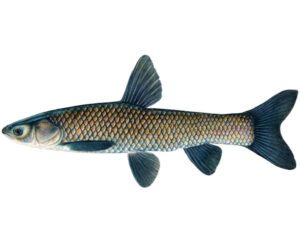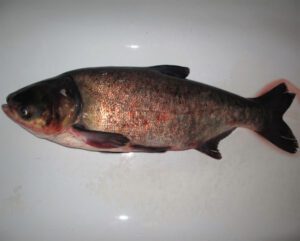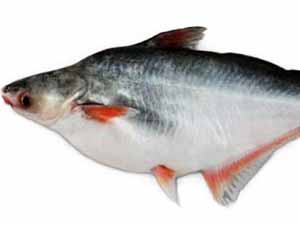Hamachi fish is one of the most popular sushi items in North America and Japan. It is very popular among the sushi lovers worldwide mainly for it’s rich flavor and versatility. The Hamachi fish is actually a species of jack fish in the family Carangidae. It is native to the northwest Pacific ocean.
Hamachi fish is known by many different names in different languages and places around the world. It is also known as Japanese amberjack or yellotail, Shiyu in China, Bang’eo in Korea, and Buri or Hamachi in Japan. Some people call these fish as “Yellowtail Tuna”. But Yellowtail Tuna is an entirely different fish species of different family, the Carangidae, rather than the family Scombridae that includes tunas, mackerels, and bonitos.
The Hamachi fish is highly appreciated in Japan and North America. They are eaten either cooked or raw and are seasonal favorite in the colder months when the meat has a higher fat content. The most popular item of this fish is Hamachi sushi. Hamachi sushi is a sushi which is made with young Hamachi fish. And it is popular for it’s smooth, buttery texture and has subtle yet rich flavor.
Most of the Hamachi fish consumed throughout the world are farmed, and rest are caught from the wild. About 120,000 tonnes of Hamachi fish are produced from commercial farms per year. However, before discussing more about Hamachi fish recipe, sushi, taste, flavor, price and other related aspects, let us first explain what is Hamachi fish.
What is Hamachi fish?
The Hamachi fish is actually a species of jack that is often called Yellowtail or Buri. It belongs to the family Carangidae and it’s binomial name is Seriola quinqueradiata.

Characteristics
The Hamachi fish have a characteristic yellow band that runs horizontally along the length of the body, as well as a yellow tail, hence their name. Their coloration features a silver-gray back with a subtle greenish or yellowish tinge along the sides, transitioning to a lighter, almost white belly.
Their body is elongated and torpedo-shaped. And this feature contribute to their efficient swimming ability. They have a forked tail and a series of small, sharp teeth. The Hamachi fish generally grow to around 1 meter in length, although some can reach 1.5 meter length.
Hamachi grow rapidly during their early years and are highly valued for their tender meat. They are often harvested before reaching full maturity. The younger juvenile stage and mature stage are known by different names. The juvenile stage is for around 5 years and they are called “Hamachi or Young Yellowtail” in this stage. And as they grow to the more mature stage, then they are called “buri”.
Dietary requirements
The Hamachi is a carnivorous fish species, and it is feed on smaller fish, squid and crustaceans in it’s natural habitat. Although, the diet of these fish can vary based on their size and the availability of prey in their environment. But their diet is generally rich in proteins and fats. And both proteins and fats are very important for their rapid growth and development.
As they mature, their dietary preferences may shift slightly to accommodate larger prey items. But in case of commercial production, the Hamachi fish are typically feed specially formulated diets that mimic their natural prey.
Reproduction And Life Cycle
Spawning of Hamachi fish typically occurs in warmer coastal waters during the spring and summer months. During this period, the adult Hamachi engage in broadcasting spawning, where females release eggs into the water column and males release sperm simultaneously to fertilize them externally.
Then the fertilized eggs drift with the currents and eventually hatch into larvae. After that, the larvae undergo several developmental stages before maturing into juvenile fish. And finally, the juveniles gradually migrate to different habitats as they grow, continuing the cycle.
Lifespan
Average lifespan of the Hamachi or Young Yellowtail is around 4-5 years. And when they reach the “buri” stage, they may live for several additional years. And a mature Yellowtail can live up to 10 years or more.
Uses
The Hamachi fish are mainly used as food. They are highly appreciated in Japan and North America as a popular food. They are eaten either raw or cooked and are a seasonal favorite. They are especially popular in the colder months when the meat has a higher fat content. The Hamachi is typically thought of as a winter delicacy of Toyama and the Hokuriku region.
The Hamachi is well known for it’s delicate flavor and tender texture. And it is a prized ingredient in sushi and sashimi. Some popular dishes that highlight it’s quality are nigiri, sashimi, and tataki.
Hamachi Recipe
There are many different Hamachi fish recipes available to try. Among all these recipes, a popular way to enjoy Hamachi is by making it into fresh sashimi. For preparing it, pick some high-quality, fresh and firm Hamachi. Then slice the fish into thin, even pieces to show off its smooth texture. After that place the slices neatly on a cold plate and add a small amount of wasabi and pickled ginger on the side.
Drizzle a little soy sauce or ponzu sauce over the Hamachi to make it even better, just before serving. You can also add some thinly sliced green onions and a few sesame seeds for extra flavor and a nice look. This simple yet fancy way of preparing Hamachi lets its natural flavor really stand out and gives a great taste experience. You can definitely try this.

Hamachi Sushi
The Hamachi sushi is a special Japanese dish which is made with young Yellowtail fish, and it is known for it’s soft and buttery texture. If you want to make it, then first of all take fresh Hamachi and cut into small and thin pieces. Then put these pieces on top of small balls of seasoned sushi rice. You can add a little wasabi, soy sauce or yuzu to give it extra flavor. Taste of Hamachi sushi is rich and smooth. It’s flavor is a nice mix of fish and the rice.
Hamachi Taste
The Hamachi fish are popular for its rich, buttery flavor and delicate texture. They are a favorite choice in high-end sushi and sashimi dishes. Taste of Hamachi is characterized by a smooth, mildly sweet profile with a subtle umami depth. The flesh is tender yet firm, and it provide a satisfying melt-in-the-mount experience.
Price
As the Hamachi fish are very popular, so it commands a premium price. Its very tough for us to tell the exact price. Because exact price can depends on numerous factors and can vary from place to place. It’s exact price depends on it’s freshness, size and sources. Please visit your local stores or search online to know more about the current price and availability in your area. Generally, you can expect the price of sushi-grade Hamachi between $20 to $40.
Frequently Asked Questions
What fish is Hamachi?
The Hamachi fish refer to the young Yellowtail or Japanese amberjack. It is a very popular fish and is prized for its rich, buttery flavor and tender texture. It is a popular choice for sushi and sashimi mainly for it’s buttery flavor and tender texture. The term “Hamachi” specifically refers to the juvenile stage of the fish. And the mature form of the fish is known as “buri”.
What kind of fish is Hamachi?
The Hamachi fish species belongs to the Carangidae family, which includes various types of jacks and pompanos. The fish is particularly valued for it’s tender, fatty flesh and rich flavor.
How much is Hamachi fish?
It’s not possible for us to tell the exact price of Hamachi fish, because exact price depends on numerous factors. But on an average, price of sushi-grade Hamachi fish can range from $20 to $40 per pound when purchased fresh. Wild caught varieties are much expensive than the farm varieties.
How to cook Hamachi fish?
You can cook Hamachi fish in many different ways including sashimi, grilled Hamachi, pan-seared Hamachi, Hamachi crudo, and Hamachi tataki. Each of these cooking methods highlights the natural flavor and tender texture of this fish.
Is Hamachi fish kosher?
No, the Hamachi fish is not considered kosher. For a fish to be kosher, it needs to have fins and scales that can be easily removed. Even though Hamachi has scales, it may not always meet all the rules for being kosher. Kosher fish also need to be prepared in a special way to avoid mixing with non-kosher foods.
Where to buy Hamachi fish?
You can buy Hamachi fish from specialty seafood markets, Japanese or Asian grocery stores, online seafood retailers, local fishmonger or grocery stores or even from restaurants.
What is Hamachi fish sushi?
Hamachi fish sushi refers to sushi made using Hamachi. It is a special Japanese dish which is made with young Yellowtail fish. This sushi is known for its soft and buttery texture.






